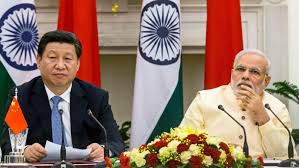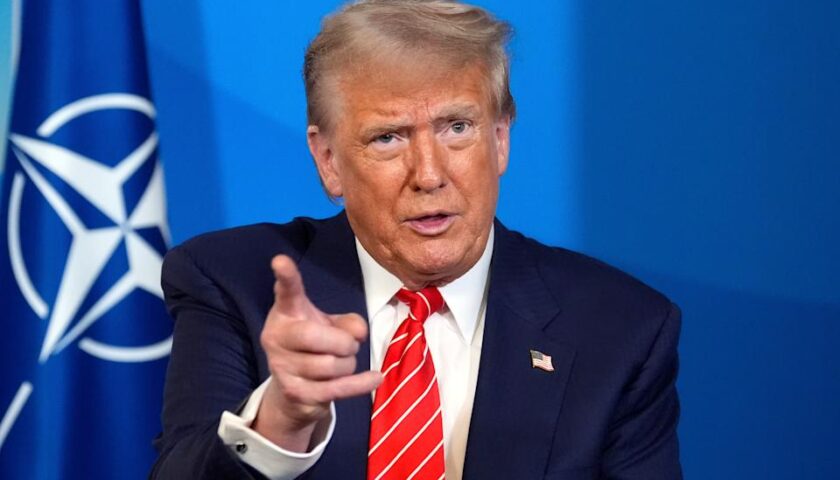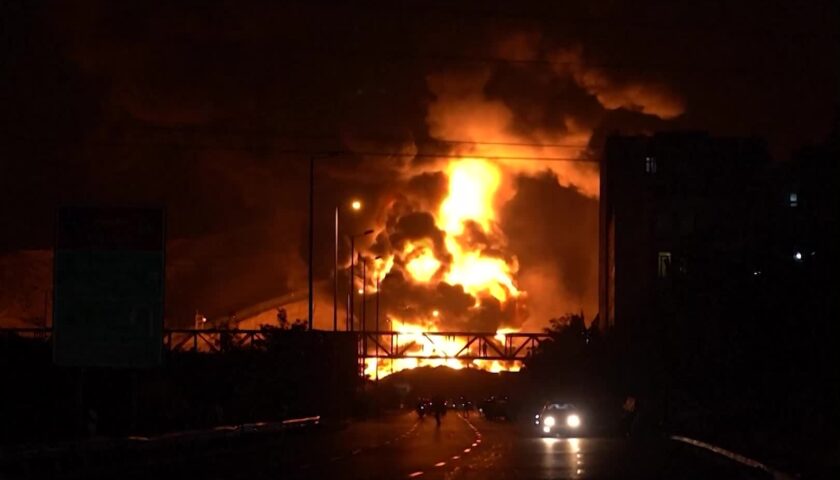- No official border through the Himalayas has been agreed by the two countries despite a 60-year truce
- Both sides used makeshift weapons rather than guns due to an agreement about not using military force
- China and India are looking to increase infrastructure in the contested region, which is fuelling recent unrest
By Tracey Shelton & Tasha Wibawa
High in the Himalayas, along a stretch of land that divides China’s autonomous region of Tibet from India, clashes have broken out between the two Asian giants in a major escalation of a weeks-long stand-off.
Both China and India possess nuclear arsenals, along with an array of other deadly weapons, but troops along the border clashed with iron rods and stones without firing a shot, killing at least 20.
Border guards have had skirmishes and fist fights in the past, but the deaths this week were the first fatalities since 1967.
The violence is a continuation of a decades-old dispute between the world’s two most populous countries over the precise location of their Himalayan border.
We take a look at how it all started and the reasons behind this unconventional choice of weapons.
How did it all start?

Ladakh, where the clashes took place, is in the region of Kashmir — an area that has been contested since the partition of the British Indian Empire in 1947.
Three nuclear-armed countries now govern various parts of the region: India, China and Pakistan.
While India and Pakistan have famously clashed over Kashmir many times, China and India also went to war over their disputed border six decades ago, which ended in 1962 with an uneasy truce.
While no border has ever officially been negotiated along the Himalayan stretch that divides the two nations, the truce established a 3,380 kilometre-long, loosely demarcated line referred to as the Line of Actual Control (LAC).
Several rounds of talks in the last three decades have failed to resolve the boundary disputes and distrust has occasionally led to flare-ups.
Associate Professor Jian Zhang, a Chinese foreign policy expert from UNSW Canberra, told the ABC the conflict had now reached “a very serious level”.
Why are they fighting with stones, not guns?
In 1996, India and China signed an LAC peace treaty agreeing that “neither side shall use its military capability” against the other along their disputed border.
In accordance with this agreement, experts say troops from two of the world’s largest armies have resorted to makeshift weapons, including fists, rocks and wooden clubs, some possibly studded with nails or wrapped in barbed wire.
In the clashes that took place on Tuesday, the Indian army said 20 of its soldiers had been killed and 17 were critically injured.
“They attacked with iron rods, the commanding officer was grievously injured and fell, and when that happened, more soldiers swarmed to the area and attacked with stones,” an Indian government source told Reuters.
Dr Zhang said the use of non-military weapons reflected the intention on both sides to “avoid the development of the situation into a military conflict”.
While Chinese officials did not disclose any casualties, the chief editor of state-owned tabloid Global Times tweeted that Chinese troops had also been killed in the clash.
What are they fighting over?
In short, along the LAC is land that both sides have claimed as part of their territory.
The LAC is poorly demarcated and the presence of rivers, lakes and snow-capped mountain peaks means the line can shift.
China analyst Srikanth Kondapalli, professor in Chinese studies in New Delhi’s Jawaharlal Nehru University, told the ABC both sides of the conflict had their own perception of the territories within the “imaginary line”.
“Because of [the LAC’s] fuzzy nature, there has been some problem in relation to border transgressions,” he said.
“The number of transgressions have increased, which indicates that each side … want to dominate as much land as possible.
“It’s a free-for-all kind of situation … this has not been resolved, hence the problem right now.”
What triggered the latest clashes?
In order to strengthen the military presence in recent years, both sides have begun building infrastructure along the border area.
China and India had a military stand-off in 2017 because India accused China of building a road in the disputed area, but this time it is the opposite.
India completed a road leading to an airfield at Galwan last October, and its decision to ramp up infrastructure in the region seems to have angered Beijing as the road could boost Delhi’s military capability in case of conflict.
In early May, hundreds of soldiers fronted up against each other at three locations, each side accusing the other of trespassing.
“According to Indian sources, this clash started during a meeting attended by soldiers on both sides who had come together to discuss efforts to deescalate tensions and disengage,” Meera Ashar, director of the South Asia Research Institute at the Australian National University told the ABC.
“In a statement made by Chinese officials, they have alleged that the clash was caused due to Indian military crossing over the LAC.
“Both these accounts may have elements of truth — Indian soldiers may have crossed over for the talks that obviously did not end as expected.”
What conditions are they fighting in?
The Indian army said in a statement that the men had also been “exposed to sub-zero temperatures in the high-altitude terrain”.
The conflict was in the Galwan valley, Dr Zhang said.
“This area was not suitable for human habitation for a long time, but due to the economic development of both sides in the past few years, various facilities are increasing, so it is said that both sides now have relatively bigger capacity and more intention to implement some infrastructure construction there.”
What’s next?
Dr Zhang said both countries must reach a mutual understanding, and stop any activities that are considered as changing the status quo in the disputed border area, including building infrastructure.
“Since many boundaries of the LAC areas are not clear, another possibility to consider that is to draw a buffer zone of about 10 kilometers on both sides of the existing Actual Control areas, and military personnel of both sides should not intervene,” he said.






